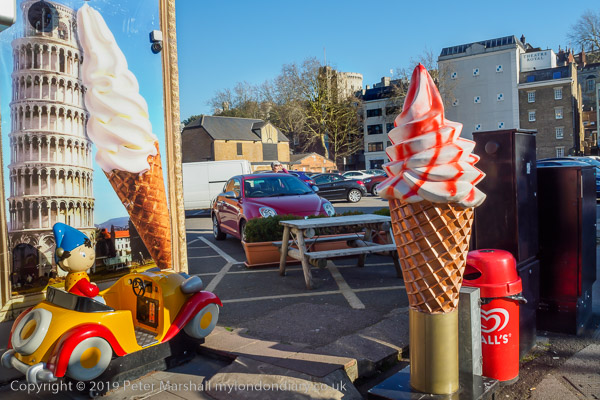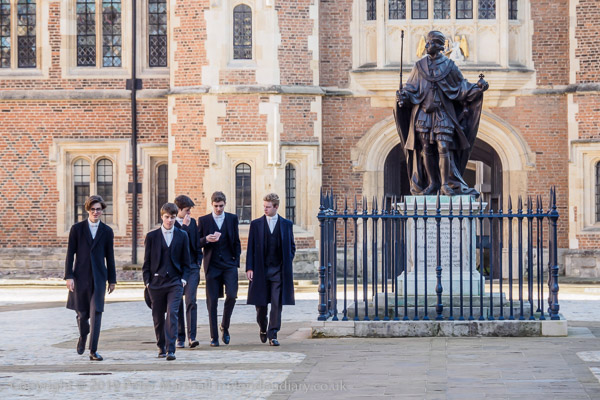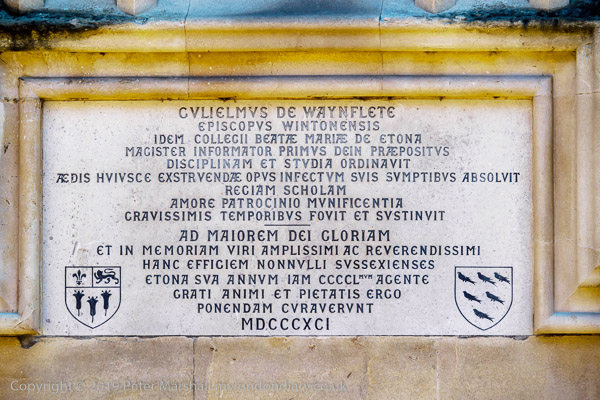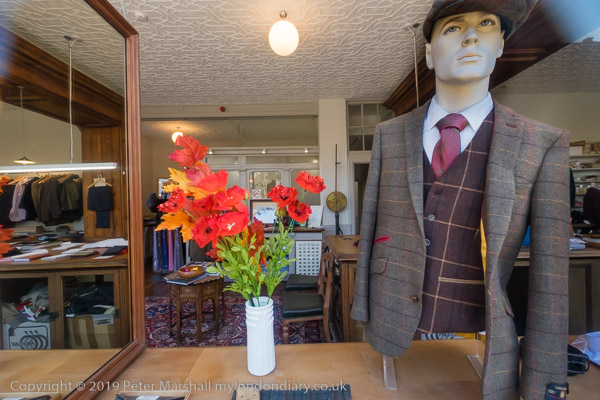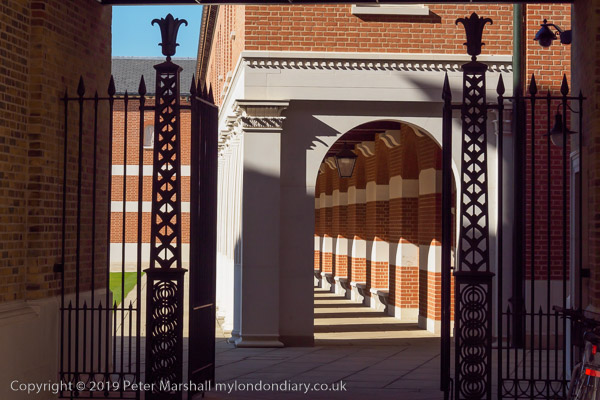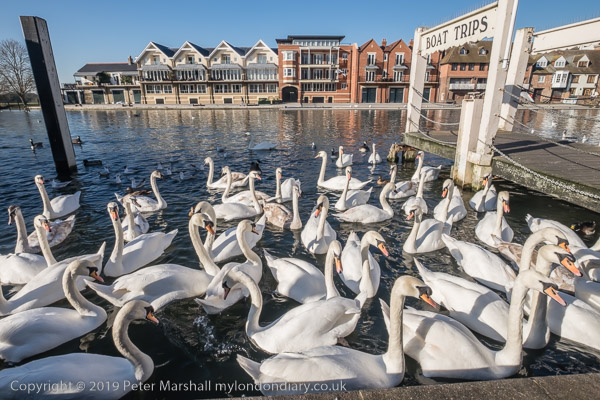Continuing my walk in Clapham on Saturday July 29th 1989 which began with Some Madness and Houses in Clapham.
This truly grand scale building facing Clapham Common is at the western edge of the London Borough of Lambeth and the road in the foreground is Cedars Road. A terrace of five mansions at 48-52 Clapham Common North side, it was built by J T Knowles in 1860 with the two ends as pavilions with roofs like those of French Renaissance chateaux. It was Grade II listed in 1969 as Knowles Terrace.
Earlier the road had been lined with villas built for rich City merchants in the mid-eighteenth century.
Wix’s Lane is the boundary between Lambeth and Wandsworth, although the street sign is from the Borough of Battersea which was became a part of Wandsworth in 1965 and my map shows the boundary as running along this wall.
Charles Wix was a builder and he built a villa for himself on Clapham Common North Side on the west corner of Wix’s Lane around 1780, living there until his death in 1820. Not long after this was rebuilt as Cedars Cottage but it and its neighbours were later replaced by a rather bland red-brick terrace.
The view here gives a better view of the rather heavy ornamental work on the 1860s Knowles Terrace.
The London School Board built Wix’s Lane School, which opened on 27th April 1903. It later became Wix County Primary School. It is now still in use as Belleville Wix Academy and also houses a Lycée Francais.
Wix’s Lane had been a field path from Clapham Common to Lavender Hill but when villas were built along this section of Clapham Common North Side they were given back entrances from it for stabling their horses and carriages. The school was the first building on its west side, taking a large section of the gardens of one of these houses, Byram House.
The Belleville Wix Academy history page includes a quote from a 1937 school inspector ‘”in the early years it was not uncommon to see twenty or thirty children being led to and from Wix’s Lane School by maidservants“. However, it goes on to say: “now the larger houses are divided into flats, and these, as well as the smaller houses in the neighbourhood, are occupied mainly by clerical workers in the City, by local tradesman and shop keepers, and by artisans and labourers of the better type“. “Poverty exists“, it states, “although it is mainly courageously hidden“‘ .
I walked back to Cedars Road and walked up it past some rather more modern flats on my way to Wandsworth Road. Much of both sides of this tree-lined road are now covered by similar modern flats, and few of the trees are cedars. A few older houses remain but although I photographed a couple of them I’ve not put these pictures on-line.
I turned west on Wandsworth Road and then went up Acanthus Road, on my way to Brassey Square.. Acanthus Road becomes Grayshott Road, and this house is on the corner of that and Glycena Road.
This and a similar house opposite act as a gateway to the Shaftesbury Park Estate built between 1872 and 1877 by the Artizans’, Labourers’, & General Dwellings Company, about which I’ve written in previous posts. These houses and their short terraces are one of only two listed parts of the estate. It was just a little further up the road at what are now Nos 65-7 that Lord Shaftesbury formally began the estate with a memorial stone in 1872. It is still in place but I didn’t photograph it.
I turned east down Sabine Road, another of the first streets to be built after that stone was laid with its message ‘Healthy homes, first condition of social progress’ in 1872. Supposedly the main figure in the 1951 Ealing comedy The Lavender Hill Mob lived in a seedy boarding house here, though none of the film was shot in the area. In just a few yards I was in Brassey Square, intended to be the centre of the estate which is now the Shaftesbury Park Estate Conservation Area.
Brassey Square which took its name from contractor Thomas Brassey and his three sons who all became MPs and had shares and it was meant to have a garden at its centre, but this was built over in 1879. This building with its frontage on Sabine Road has doors numbered 78 and 1 presumably for that road and Brassey Square respectively. The building is locally listed and is presumed to have been a part of the never-completed plan to build a library, central hall and co-operative shops fronting Brassey Square.
My account of the walk will continue in a later post.
Flickr – Facebook – My London Diary – Hull Photos – Lea Valley – Paris
London’s Industrial Heritage – London Photos
All photographs on this page are copyright © Peter Marshall.
Contact me to buy prints or licence to reproduce.



























































